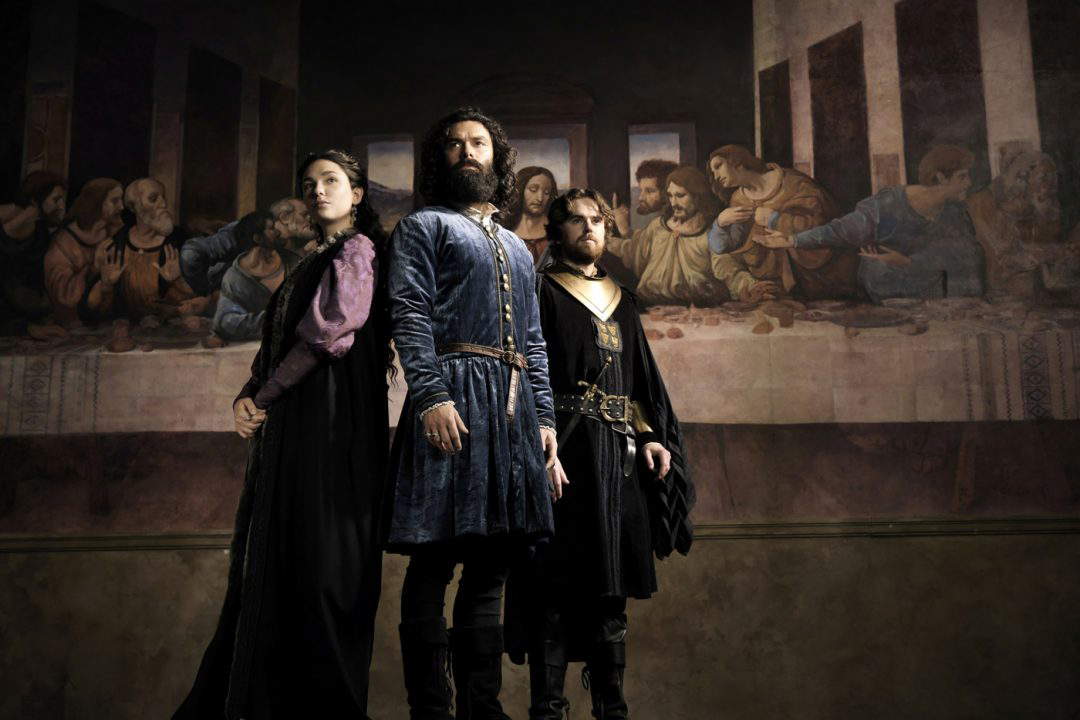Anticipation and curiosity led us, like thousands of other viewers, to follow the first two episodes of the TV series dedicated to Leonardo da Vinci: in fact, last night, the first episode (there are four in all, divided into eight episodes) of the new event series produced by Lux Vide with Rai Fiction, Big Light Productions in association with France Télévisions, RTVE and Alfresco Pictures, co-produced and distributed worldwide by Sony Pictures Television, was aired on Rai1 in its world premiere.
In the intent of the series, according to a Rai press note, the desire is to “unravel the mystery of one of the most fascinating and enigmatic characters in History. We all know his works of art, but his character is still unknown. What moved his endless imagination? What travail did his greatest creations conceal?” The producers wanted to tell “the story of a genius whose complex and enigmatic personality remains a compelling secret to this day” and “unveil for the first time the mystery of the man hidden behind the genius.” Enigma and mystery are thus the elements on which the plot of the Leonardo series was intended to be built, probably because the most famous portraits of the great genius, think of the enigmatic smile of the Mona Lisa, still have for many an aura of mystery and the indefinite. However, was it really necessary to turn poor Leonardo into an alleged murderer to give that extra touch of mystery to the genius’ TV character, played by a charming and gloomy Aidan Turner?
 |
Indeed, the fiction opens in 1506, in Milan, with the arrest of Leonardo da Vinci, accused of poisoning and killing Caterina da Cremona, a fictional character played in the series by Matilda De Angelis. It is from the declaration of his innocence to an officer of the Podestà that the artist’s memories begin, taking him back to when, in his early twenties, he worked as an apprentice in Andrea del Verrocchio ’s workshop in Florence and first met Caterina da Cremona, who posed as a model: a beautiful and confident servant girl, but one who hides an inner suffering that only he can understand; the maiden becomes Leonardo’s best friend as they both share a sense of loneliness.
“This is a crime mystery,” series producer Luca Bernabei told Repubblica. “We make TV series, not documentaries. We were inspired by true sources, but then the scriptwriters needed to invent something about a life that has many dark points. The story of Caterina da Cremona, for example, is true because there are contracts in which Leonardo asked her as a model. We thought she was his muse of inspiration and we wove into the real plot some elements of fiction.”
Agreed that a TV drama should not be a documentary, and therefore elements and stratagems that do not reflect total adherence to the biography in this case of Leonardo are allowed, but from the account given of his life in the new series results in an almost completely distorted view, and enriched with details that are hardly credible for theera (such as the “vernissage” of the Baptism of Christ where Leonardo da Vinci is directly hired by Ludovico il Moro, “models” undergoing long posing sessions in front of the artist, the table painted by Verrocchio and Leonardo in days as if it were a fresco, the disinhibition of the protagonist, excessive for those times). One perceives so far the smallest part of it, which then is the fundamental aspect of the genius, the aspect to stand out over everything, namely his great ingenuity, his artistry artistry, his talent that lead him to defy the conventions of the time and to emerge from a very young age in his master’s workshop (moreover, in reality between Leonardo and Verrocchio there was not all that much of an age difference that there seems to be in the fiction, made explicit by a rather mature Giancarlo Giannini: Verrocchio, at the time of the making of the Baptism of Christ, was in his early forties or early twenties, while Leonardo was in his early twenties). His studies, his curiosity, his challenging himself with continuous inventions, his innovations both artistically and scientifically seem to be present here but obscured by a reconstruction of his character that is, moreover, totally arbitrary. The alleged murder, the story of Caterina da Cremona (a character about whom there are no historical sources) that runs parallel to Leonardo’s, the disagreement with his father, fantastic elements such as the image of a naked female body unfolding broad and majestic wings, and, last but not least, the curse that has been hanging over Leonardo since he was an infant in the cradle, revealed to his mother by the village sorceress: “she said I would destroy everything I love.” The first evening devoted to Leonardo da Vinci closes with this revelation to viewers.
But was it really necessary to produce a knockout “crime” series about Leonardo devastating the already extraordinary fame and power of the great genius’ life and art? Did the television audience really want this?
Warning: the translation into English of the original Italian article was created using automatic tools. We undertake to review all articles, but we do not guarantee the total absence of inaccuracies in the translation due to the program. You can find the original by clicking on the ITA button. If you find any mistake,please contact us.